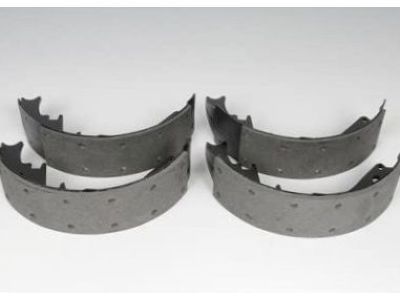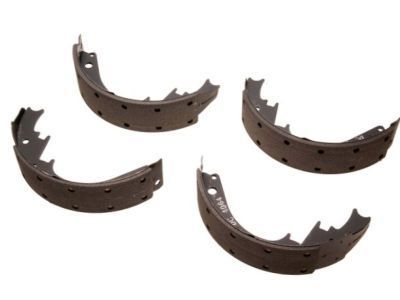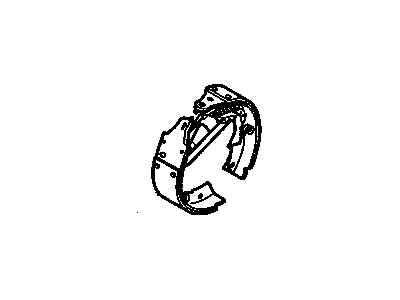
My Garage
My Account
Cart
Genuine Chevrolet K1500 Brake Shoe
Brake Shoe Set- Select Vehicle by Model
- Select Vehicle by VIN
Select Vehicle by Model
orMake
Model
Year
Select Vehicle by VIN
For the most accurate results, select vehicle by your VIN (Vehicle Identification Number).
3 Brake Shoes found
Chevrolet K1500 Shoe Kit,Rear Brake
Part Number: 19150002$112.49 MSRP: $221.23You Save: $108.74 (50%)Ships in 1-2 Business DaysChevrolet K1500 Shoe,Rear Brake
Part Number: 18030062$54.94 MSRP: $101.13You Save: $46.19 (46%)Ships in 1-3 Business DaysChevrolet K1500 Shoe Kit,Rear Brake
Part Number: 18019991$54.94 MSRP: $101.13You Save: $46.19 (46%)Ships in 1-3 Business Days
Chevrolet K1500 Brake Shoe
Brake Shoe of Chevrolet K1500 is closely related with the drum brake and it serves as the friction point to halt the automobile. These shoes are fixed to a backing plate and have hydraulic wheel cylinders which come into contact with the brake drum on application of brakes. The self-adjuster mechanisms in these brake assemblies are mainly used to regulate the shoe to the drum clearance and also adjust itself due to the wearing out of the lining. Two typical layouts of brake shoes are non-servo or leading-trailing arrangement, and duo-servo type; the latter has more haulage of stopping power since it has a self-energizing feature. The friction linings have to be inspected periodically in normal operation, because the friction material deteriorates with use and has to be replaced when it becomes unsafe. Altogether, the types of the Brake Shoes Front in Chevrolet K1500 cars enhance the possibility of reliable stop of vehicles while enabling easier usage of the parking brake.
Each OEM Chevrolet K1500 Brake Shoe we offer is competitively priced and comes with the assurance of the manufacturer's warranty for the part. Furthermore, we guarantee the speedy delivery of your orders right to your doorstep. Our hassle-free return policy is also in place for your peace of mind.
Chevrolet K1500 Brake Shoe Parts Questions & Experts Answers
- Q: How to replace duo-servo type brake shoes and springs on Chevrolet K1500?A:Whenever brake shoes are replaced, it's essential to replace the return and hold-down springs as well, as the continuous heating/cooling cycle weakens the springs over time, leading to dragging shoes and accelerated wear. To begin the process, loosen the wheel lug nuts, raise the rear of the vehicle, and support it on jack stands securely. Block the front wheels to prevent rolling, and remove the rear wheels. Proceed to remove the brake drum/hub, ensuring the drums aren't stuck due to corrosion by using penetrating oil and gentle tapping. If the drum is locked onto the shoes due to excessive wear, release it by aligning the hole with the adjuster and backing it off. For brake shoe replacement, follow the specified procedures for removal and installation, including replacing drum retainers, disassembling components, and cleaning or lubricating parts as necessary. Check the brake drum for wear and resurface it if required or replace it if worn beyond the maximum allowable diameter. Address any brake fluid leakage at the Wheel Cylinders by replacing or overhauling them. Verify that the backing plate mounting bolts are tight and clean the shoe contact areas with emery cloth. Install the drum and adjust the brakes using an adjusting tool to ensure proper pedal position and functionality before driving.












